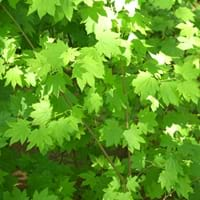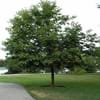Life Span
Perennial
Perennial
Origin
North America, Northwestern United States
Madagascar
Types
Not Available
Delonix regia var. flavida Stehle
Delonix regia var. genuina Stehle
Delonix regia var. genuina Stehlé
Number of Varieties
Not Available
Habitat
Forests, gardens, Open Forest, Tropical regions, Wet forest
gardens, Roadsides, Shaded sites, Woodlands
USDA Hardiness Zone
5-9
10-15
Sunset Zone
A3, 2b, 3a, 3b, 4, 5, 6, 14, 15, 16, 17
H1, H2
Habit
Clump-Forming
Spreading
Flower Color
White, Purple
Red, Orange Red
Flower Color Modifier
Bicolor
Bicolor
Leaf Color in Spring
Green, Light Green
Green
Leaf Color in Summer
Green, Light Green
Green, Dark Green
Leaf Color in Fall
Red, Orange, Dark Red, Orange Red
Dark Green
Leaf Color in Winter
Not Available
Not Available
Leaf Shape
Maple shaped
Pinnate
Plant Season
Spring, Summer, Fall, Winter
Spring, Summer, Fall
Sunlight
Full Sun, Partial Sun, Partial shade, Full Shade
Full Sun
Type of Soil
Clay, Loam, Sand
Loam, Sand
The pH of Soil
Acidic, Neutral, Alkaline
Acidic, Neutral, Alkaline
Soil Drainage
Average
Well drained
Bloom Time
Early Spring
Late Spring, Early Summer, Summer
Tolerances
Wet Site
Pollution, Drought, Salt
Where to Plant?
Ground
Ground
How to Plant?
Stem Planting
Grafting, Seedlings, Stem Planting, Transplanting
Plant Maintenance
Medium
Medium
Watering Requirements
Allow soil to be completely dry in between waterings, Requires consistently moist soil, Requires watering in the growing season, Water Deeply
Average Water Needs, Reduce watering in winter
In Summer
Lots of watering
Lots of watering
In Spring
Moderate
Moderate
In Winter
Average Water
Average Water
Soil pH
Acidic, Neutral, Alkaline
Acidic, Neutral, Alkaline
Soil Type
Clay, Loam, Sand
Loam, Sand
Soil Drainage Capacity
Average
Well drained
Sun Exposure
Full Sun, Partial Sun, Partial shade, Full Shade
Full Sun
Pruning
Pinch or prune as they grow to promote branching and bushiness, Prune every year, Prune for shortening long shoots, Prune if you want to improve plant shape, Remove deadheads
Prune if you want to improve plant shape, Remove damaged leaves, Remove dead branches, Remove dead leaves, Shape and thin as needed
Fertilizers
All-Purpose Liquid Fertilizer
All-Purpose Liquid Fertilizer
Pests and Diseases
Billbugs, Fungal Diseases, Red blotch
Pests and diseases free
Plant Tolerance
Drought
Drought
Flower Petal Number
Single
Single
Foliage Texture
Medium
Fine
Foliage Sheen
Matte
Matte
Attracts
Not Available
Birds, Hummingbirds, Butterflies
Allergy
Not Available
Not Available
Aesthetic Uses
Showy Purposes
Beautification, Showy Purposes
Beauty Benefits
Not Available
Not Available
Environmental Uses
Air purification
Air purification
Medicinal Uses
Not Available
Not Available
Part of Plant Used
Not Available
Bark, Pods, Sap
Other Uses
Not Available
Gum, Used as firewood, Used As Food, Used as Ornamental plant
Used As Indoor Plant
No
No
Used As Outdoor Plant
Yes
Yes
Garden Design
Feature Plant, Foundation, Mixed Border, Topiary / Bonsai / Espalier
Feature Plant, Shade Trees, Street Trees, Tropical
Botanical Name
ACER circinatum
DELONIX regia
Common Name
Oregon Vine Maple, Vine Maple
Flamboyant Tree, Flame Tree, Royal Poinciana
In German
Wein-Ahorn
Flamboyant
In French
Maple Vine
Flamboyant
In Spanish
arce vid
Extravagante
In Greek
αμπέλου Maple
Επιδεικτικός
In Portuguese
bordo de videira
extravagante
In Polish
Vine Maple
Kwiecisty
In Latin
vitis Maple
flamboyant
Phylum
Tracheophyta
Not Available
Class
Magnoliopsida
Magnoliopsida
Family
Aceraceae
Fabaceae
Clade
Angiosperms, Eudicots, Rosids
Angiosperms, Eudicots, Rosids
Tribe
Not Available
Caesalpinieae
Subfamily
Hippocastanoideae
Caesalpinioideae
Number of Species
Not Available
Not Available
Season and Care of Vine Maple and Flamboyant Tree
Season and care of Vine Maple and Flamboyant Tree is important to know. While considering everything about Vine Maple and Flamboyant Tree Care, growing season is an essential factor. Vine Maple season is Spring, Summer, Fall and Winter and Flamboyant Tree season is Spring, Summer, Fall and Winter. The type of soil for Vine Maple is Clay, Loam, Sand and for Flamboyant Tree is Loam, Sand while the PH of soil for Vine Maple is Acidic, Neutral, Alkaline and for Flamboyant Tree is Acidic, Neutral, Alkaline.
Vine Maple and Flamboyant Tree Physical Information
Vine Maple and Flamboyant Tree physical information is very important for comparison. Vine Maple height is 610.00 cm and width 610.00 cm whereas Flamboyant Tree height is 610.00 cm and width 610.00 cm. The color specification of Vine Maple and Flamboyant Tree are as follows:
Vine Maple flower color: White and Purple
Vine Maple leaf color: Green and Light Green
Flamboyant Tree flower color: Red and Orange Red
- Flamboyant Tree leaf color: Green
Care of Vine Maple and Flamboyant Tree
Care of Vine Maple and Flamboyant Tree include pruning, fertilizers, watering etc. Vine Maple pruning is done Pinch or prune as they grow to promote branching and bushiness, Prune every year, Prune for shortening long shoots, Prune if you want to improve plant shape and Remove deadheads and Flamboyant Tree pruning is done Prune if you want to improve plant shape, Remove damaged leaves, Remove dead branches, Remove dead leaves and Shape and thin as needed. In summer Vine Maple needs Lots of watering and in winter, it needs Average Water. Whereas, in summer Flamboyant Tree needs Lots of watering and in winter, it needs Average Water.





